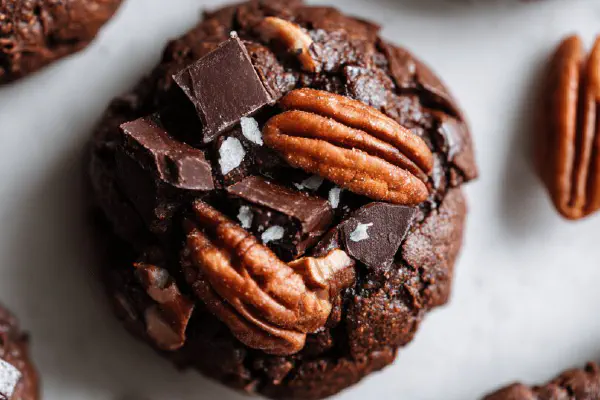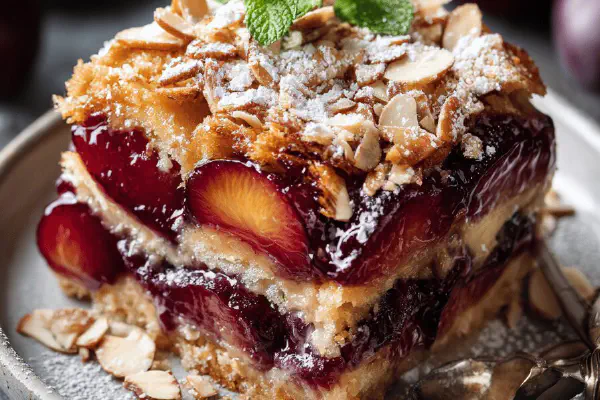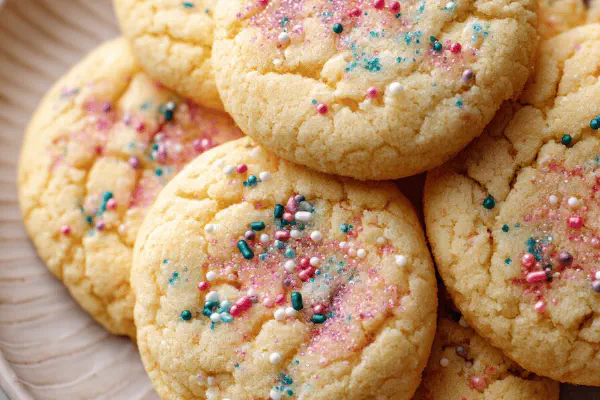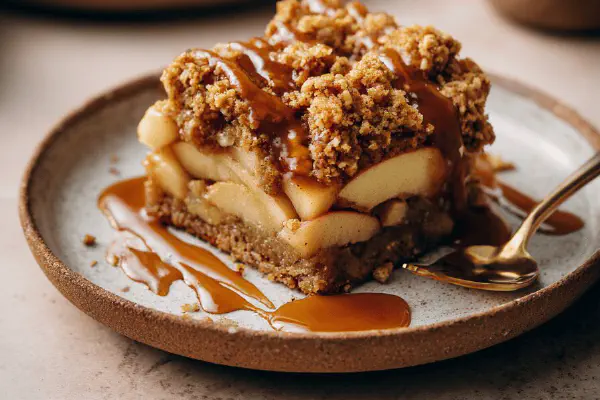Rhubarb Elderflower Cake
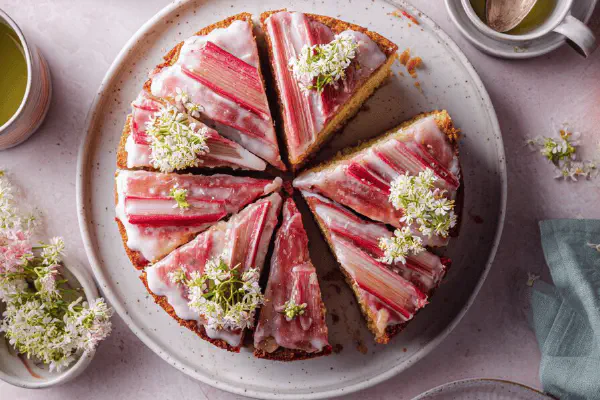
By Emma
Certified Culinary Professional
Ingredients
- 120 g all-purpose flour, sifted (about 3/4 cup plus 1 tbsp)
- 11 ml baking powder (about 2 1/4 tsp)
- 1 ml salt (1/4 tsp)
- 3 large eggs, separated and at room temperature
- 100 g granulated sugar (just under 1/2 cup plus 1 tbsp), divided
- 130 ml heavy cream 35% (about 1/2 plus 1 tbsp cup), can sub coconut milk for non-dairy
- 15 ml elderflower syrup (1 tbsp), plus extra for glaze
- 5 ml powdered gelatin (1 tsp), or 8 ml agar agar powder for vegan
- 15 ml cold water (1 tbsp)
- 300 g fresh or frozen rhubarb, diced (about 2 1/2 cups)
- 150 g granulated sugar (3/4 cup plus 1 tbsp)
- 20 ml fresh lemon juice (about 1 tbsp plus 1 tsp)
- 100 g powdered sugar (3/4 cup) for glaze
- 30 ml elderflower syrup (2 tbsp) for glaze
- Optional edible flowers for garnish
About the ingredients
Method
Cake
- Set oven rack mid-position. Heat oven to 180 C (350 F). Line 20 cm springform pan base with parchment only; no butter. Flour avoided here to keep crust tender; trust parchment.
- Sift flour, baking powder, salt together. Dry ingredients separate for even distribution; no lumps.
- Whisk egg yolks with 55 g sugar, cream, elderflower syrup till totally smooth. Don't rush here; sugar dissolves into cream for silkiness.
- Gently fold dry mix into yolk blend. Use rubber spatula; no vigorous stirring. Clumps kill lightness.
- In clean, dry bowl beat egg whites till foamy then gradually add remaining sugar (45 g) until stiff peaks form. Look for shiny, firm white peaks standing tall; over-beating dries whites, under-beating deflates.
- Fold a quarter of meringue into batter to loosen it. Then fold remaining whites gently but thoroughly, no lumps, no tough spots. A light hand keeps air trapped, making cake springy.
- Pour batter into pan. Smooth top gently with offset spatula.
- Bake 28–33 minutes. Start checking at 28 min. Toothpick inserted should come out clean or with a few moist crumbs. Top will be pale golden, edges just pulling from pan. Don’t overbake or cake turns dry.
- Cool on rack completely, 1 1/2 to 2 hours. Cooling important; warm cake drags moisture out from jam and glaze later.
- Remove from pan carefully by running knife around edges. Slide cake off parchment onto plate or cake board.
Rhubarb Jam
- Sprinkle gelatin over cold water; let bloom 5–6 minutes. Gelatin powder, not sheets, preferred for ease. Agar agar works but add once rhubarb is done and hot.
- In saucepan, combine rhubarb, sugar, lemon juice. Bring to gentle boil, then simmer medium heat 12–15 min until rhubarb breaks down and mixture thickens like syrup. Stir often to prevent sticking or burning. Aroma changes from sharp to mellow tart-sweet when ready.
- Remove from heat. Stir in gelatin till fully dissolved. Agar: sprinkle and whisk in, then simmer 2 more min.
- Pour jam into bowl; cover loosely, cool to room temperature. Refrigerate at least 1 hour till cold and set but spreadable, not rock solid.
Assembly
- Slice cake horizontally into two equal layers using serrated knife. Go slow; cake crumb fragile.
- Place bottom layer on serving plate. Spread chilled rhubarb jam evenly – don’t overload or cake will slide off.
- Set top layer gently over jam. Press lightly to attach but don’t squash airiness.
Elderflower Glaze
- Mix powdered sugar and elderflower syrup until glaze is smooth, opaque, and slightly runny. Add syrup or sugar incrementally. Should drip slowly off spoon but hold shape.
- Pour over cake, letting glaze flow elegantly down sides. Use spatula for coverage or just a ladle drizzle. Imperfections add charm.
- Decorate with edible flowers if desired; adds visual pop and subtle fragrance.
- Chill cake under dome in fridge. Keeps freshness 3 days max. Glaze softens slightly on cake surface; avoid warm rooms.
- == Tips & Troubleshooting ==
- Egg whites shouldn’t have any yolk traces—fat kills volume. Use copper or stainless bowls, no plastic residues.
- If cake cracks, reduce oven temperature slightly next time or rotate pan halfway through bake.
- Rhubarb jam too runny? Simmer longer or add little more gelatin next batch.
- No elderflower syrup? Substitute with honey or simple syrup infused with lemon zest, but flavor will shift.
- Glaze too thick? Thin with warmed water, little at a time. Too runny? Add more powdered sugar sparingly.
- Don’t skip chilling jam; warm jam makes layers slide or cake soggy quickly.
- Handling cake while still warm wrecks texture; patience pays off.
- Leftover jam is fantastic swirled into yogurt or spread on toast.
- Using frozen rhubarb? Thaw and drain excess liquid to avoid watery jam.
- Whisk cream and elderflower into batter adds moisture but be cautious – too much liquid deflates batter.
Cooking tips
Chef's notes
- 💡 Egg whites need clean bowl; no yolk fat slips in or volume tanks. Use copper or stainless; plastic holds grease and kills foam. Gradual sugar addition keeps whites glossy, stiff. Under or over beat ruins air structure; watch texture carefully, shiny stiff peaks stand tall not dry flakes.
- 💡 Gelatin bloom essential; cold water soak 5-6 minutes. Agar agar differs; add powdered only once rhubarb hot to dissolve properly, simmer longer. Too little gelatin and jam runs. Simmer rhubarb gently; watch bubbles shrink and aroma mellow. Jam thickens visually, not just by time.
- 💡 Bake with parchment only, no butter or flour; extra fat clogs crumb, makes crust tough. Springform pan edges grip better with parchment sole. Oven temp steady 180 C; watch toothpick from 28 mins. Pull edges slightly from pan starts when done. If overbaked edges dry, crumb tough, jam moisture lost.
- 💡 Fold batter slowly; quarter meringue first to loosen batter, rest gentle but thorough. Big folds flatten batter, dull rise. Rubber spatula key, no stirring. Batter texture silky, not lumpy. Adding cream or coconut milk moisture varies; too wet deflates meringue. Adjust liquid with caution, fold slow.
- 💡 Glaze viscosity tricky; mix powdered sugar with elderflower syrup bit at time. Too thick coats uneven, looks dull; too thin runs off cake sides fast. Should drip slowly, hold shape mostly. Edible flowers add aroma and contrast but optional. Chill cake to set glaze, avoids slide or melting.
Common questions
How to replace gelatin if vegan?
Use agar agar powder instead, 8 ml to 5 ml gelatin. Add to rhubarb only when hot after cooking. Simmer 2 more minutes for full dissolve. Gelatin bloom skipped. Texture shifts slightly firmer with agar but workable.
What if jam is too runny?
Simmer longer on medium heat. Watch syrup consistency on spoon for sticky, thick coat. Add extra gelatin little by little; bloom separately. Cool then test spreadability. Too watery comes from insufficient simmer or too much liquid used.
Can cream be replaced?
Yes, coconut milk works best substitute; 35% fat mimics heavy cream. Flavor shifts slightly tropical but body stays. Coconut milk doesn’t whip well so rely on meringue stiffness. Important to avoid excess liquid to keep airy crumb intact.
How to store leftover cake?
Refrigerate under dome or loosely cover. Keeps moist 2-3 days. Jam moisture pulls in slowly; glaze softens but holds. Freezing possible but texture changes; thaw at room temp wrapped, not fridge. Watch condensation on glaze when thawing.
